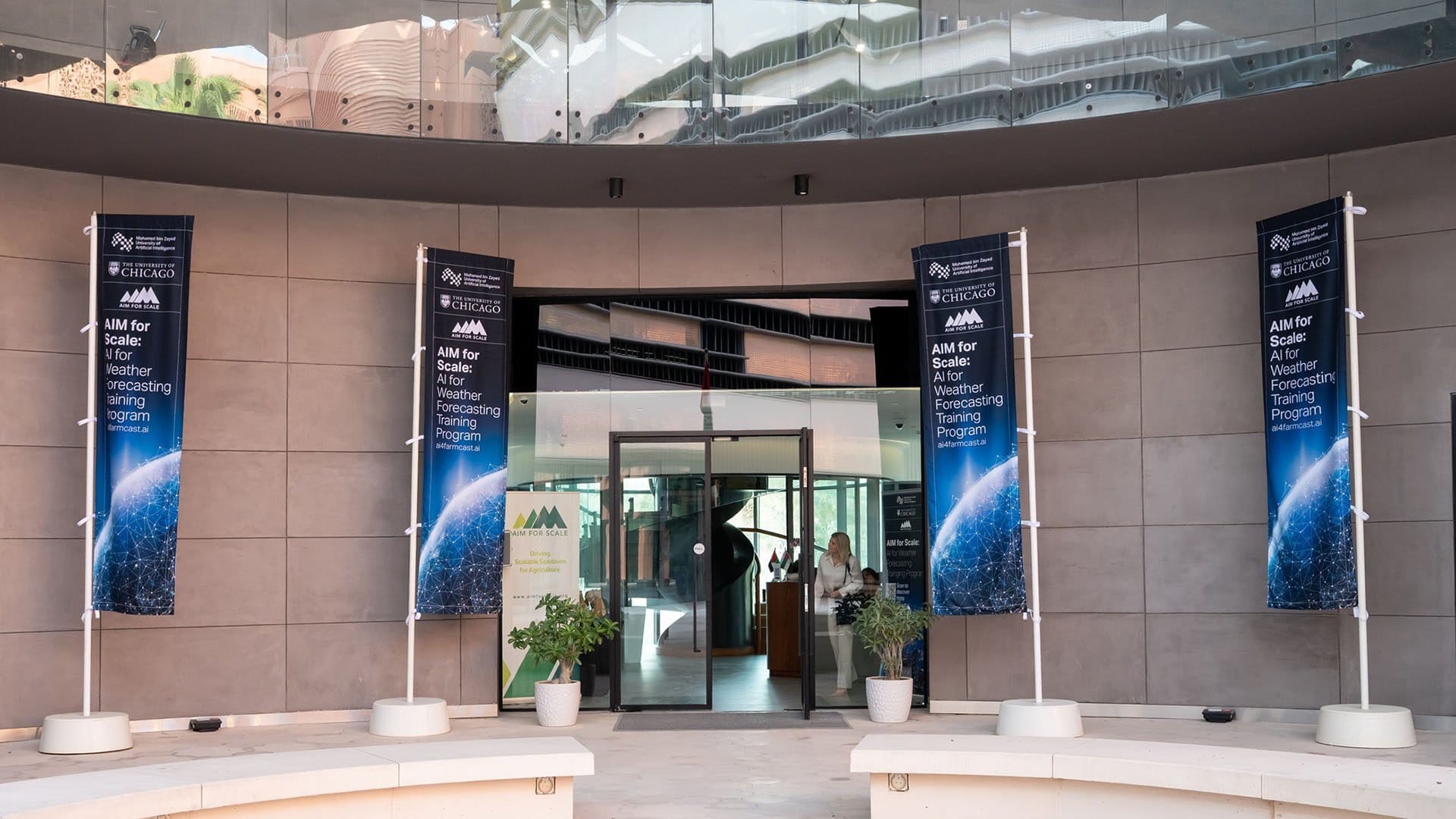Abu Dhabi just kicked off a practical programme to help low- and middle-income countries run modern, AI-powered weather services. The Mohamed bin Zayed University of AI (MBZUAI), AIM for Scale and the University of Chicago are training national forecasters and agriculture teams to build and operate models that answer farmers’ real questions—like when to plant and how to plan irrigation. The first cohort includes Bangladesh, Chile, Ethiopia, Kenya and Nigeria, with sessions running 22–26 September in the UAE.
What the programme actually teaches
This is not a lecture tour. It’s hands-on capacity building aimed at getting national teams ready to run AI models in-house.
- Core topics: data pipelines, model verification, downscaling, and forecast delivery to end users
- Focus: short-term, weekly and seasonal windows that guide farm work
- Outcome: national services that can generate local forecasts at lower cost and higher speed
- Hardware: participants receive high-performance multi-GPU laptops to keep models running back home
The curriculum covers the full path from raw weather data to a forecast a farmer trusts. It pushes beyond importing global products to producing country-specific guidance that lines up with planting calendars, irrigation cycles and subsidy schedules. The hardware piece removes a common blocker for public agencies: not enough compute to run modern models reliably.
Who’s involved and why it matters
The partnership spans UAE institutions and global science bodies to keep the tech grounded and interoperable.
- UAE hosts: MBZUAI and the National Center of Meteorology
- Science partners: University of Chicago’s Institute for Climate and Sustainable Growth and Data Science Institute
- Ecosystem voices: WMO, Google DeepMind/Google Research, ECMWF, AfriClimate AI, the Norwegian Meteorological Institute and PxD
- Funding: International Affairs Office at the Presidential Court of the UAE
Backed by UAE funding and convening power, the programme links frontier AI research with operational standards followed by WMO and ECMWF. That mix reduces the “last mile” gap between impressive demos and forecasts people actually use. It also sets a useful precedent for the region: train public agencies, not just pilots with private vendors.
Farmer-first design, not model-first
The pitch is simple: forecasts are only as good as the decisions they inform.
- Ministries of agriculture co-design the outputs
- Models are tuned for farm-level needs, not only national averages
- Feedback loops refine products after real-world trials
- Examples: predicting the start of rainy seasons, guiding fertiliser timing, planning labour
By bringing agriculture officials into the loop, the work targets questions that move yields and incomes. That means translating “30% chance of rain” into “delay sowing by three days” and measuring if that advice helped. The teams plan to scale this approach to 30 countries over time—building a playbook others can copy.
Why launch it in the UAE—and why now
The timing reflects two trends: harsher weather and faster AI.
- Climate volatility is hitting planting windows and water use
- AI weather models now run faster and cheaper than classic NWP stacks
- Regional fit: the UAE has the labs, compute, and convening clout to host and scale
Running the first cohort in Abu Dhabi makes sense. The UAE is investing in applied AI and has a growing research community to support visiting teams. For our readers here, this also adds another concrete example of “AI for public services” coming out of the Emirates, alongside local initiatives in models and industry.
What this means for readers in the UAE
There’s a knock-on effect for the local ecosystem.
- More collaboration between UAE labs and regional ministries
- Opportunities for UAE-based startups to build tools on top of public forecasts
- A pipeline of joint projects around agriculture, water and food security
If you work in agritech, geospatial, edge compute or policy, keep an eye on how these cohorts use tools from groups like Google DeepMind, ECMWF and WMO. It’s a signal for where procurement and partnerships may go next.
Who’s in the first training cohort?Bangladesh, Chile, Ethiopia, Kenya and Nigeria. Sessions run 22–26 September in Abu Dhabi, hosted by MBZUAI and the NCM.
What problem does the hardware grant solve?Many agencies lack GPUs to run or fine-tune modern AI weather models. The programme supplies multi-GPU laptops so teams can continue work at home without waiting for centralised compute.
How soon will farmers see value?The design brings agriculture ministries in from the start, so outputs map to planting and irrigation calendars. Expect early wins on short-term and seasonal guidance, with models refined through feedback.
Subscribe to our newsletter to get the latest updates and news








Member discussion